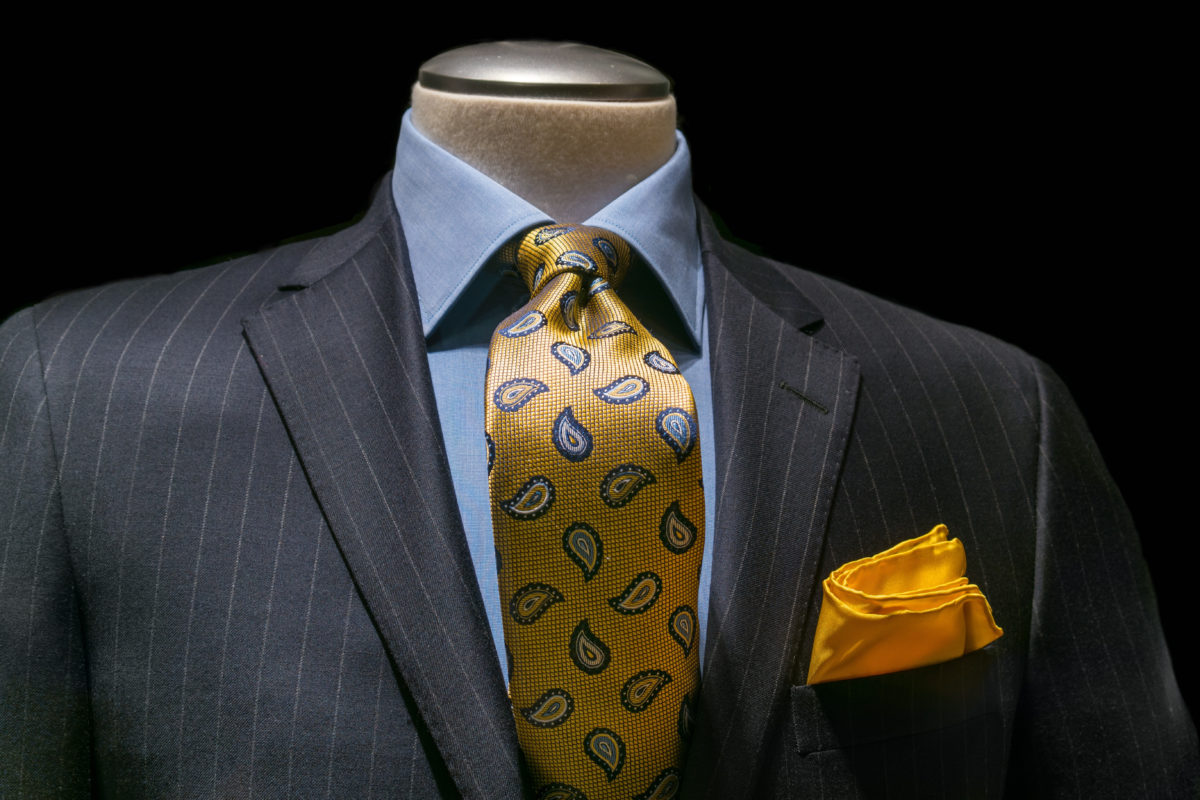The Ultimate Pattern Guide


If you can pull off patterned outfits successfully, the return can be big. Among other things, it can up your chances of catching people’s eye in a crowded room.
But it requires a bit of courage and a fair amount of know-how.
Fortunately, there are time-honored and simple rules for pairing patterns so they’ll look great, and today we’re going to be teaching you all of them.
3 Rules For Mixing Patterns
- Mix the Patterns
You can generally group all menswear patterns into four broad categories: 1) checks/plaids 2) stripes 3) repeat prints (polka dots, paisleys, wild animals, etc) and 4) textures (like hopsack, herringbone, etc). We’ll get into the fundamentals of each pattern later on in this article.
Try pairing one with another, and avoid “stripes with stripes” or “checks with checks”. When in doubt, use a solid to balance everything out.
- Offset The Scales
Look carefully at the size of the patterns together. They should each be on a different scale. One big, one medium, one small – for example. The small one should be very small. There is taste in subtlety and pattern-mixing is all about restraint.
- Distribute the Strength
The patterns should also be different levels of “boldness” or “loudness”. One pattern should be faint and not very noticeable. One should be more conservative; evident but not overpowering. And one can be a little more bold and flashy, within reason.
9 Popular Prints and Patterns
Adding a bold pattern or print into your look is the easiest way to show that you’ve put real thought into your outfit. A pattern is any repeated design, whereas a print is a design that has been printed onto fabric, rather than woven or embroidered. The words are often used interchangeably to talk about any non-solid-color clothing. Some of the most popular patterns and prints include:
- Gingham is a fabric made from dyed cotton yarn woven into a checkered pattern, usually white and one other color.
- Stripes come in all different styles, from pinstripes (very narrow vertical stripes that often appear on dark-colored suits) to the classic French marinière T-shirt with its distinctive blue and white horizontal stripes.
- Animal prints mimic the stripes, spots, and scales of wild animals. Snake, zebra, and leopard prints make a bold statement, but there are ways to incorporate them subtly.
- Plaid, also known as tartan, is a woven fabric traditionally made from wool that is now a common pattern for flannel shirts. Multicolor plaid features repeating vertical and horizontal stripes of varying thicknesses.
- Floral patterns feature flowers of all kinds. Floral prints can be tiny (aka ditsy) or large and detailed. They can be multicolor or monochrome. They are fun patterns to work with since they offer so much variety.
- Polka-dots are a pattern of repeating circles of the same size. They can be big or small; smaller dots tend to look more neutral, while larger dots make more of a statement.
- Geometric prints feature shapes such as triangles, squares, and trapezoids. They can be intricate and repetitive, or more abstract. Houndstooth is an example of a repeating geometric pattern in two colors.
- Paisley is a Persian pattern featuring a teardrop design with a curved point. The interior of the teardrop often contains intricate geometric or floral-inspired designs. You’re likely to find paisleys printed on silk items like ties and scarves.
- Herringbone is a fabric (usually twill) featuring a V-shape weave with a repeating pattern that has the appearance of a fish skeleton.
Custom Bespoke Suits in NYC, NJ, & Anywhere In The U.S
BBspoke personal service is our specialty and we have many ways to serve you in NJ and NYC Area. Our custom tuxedo, suit, and tailoring services go far beyond just the material itself. Book an appointment online today. You’ll be fitted so that your new suit has the best look and feel you can buy.
